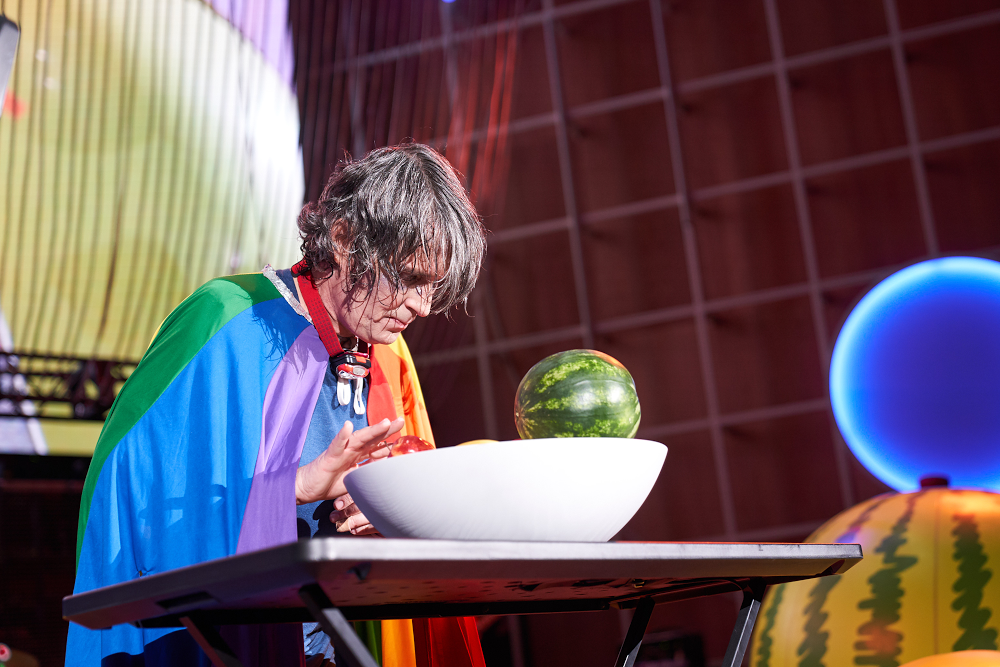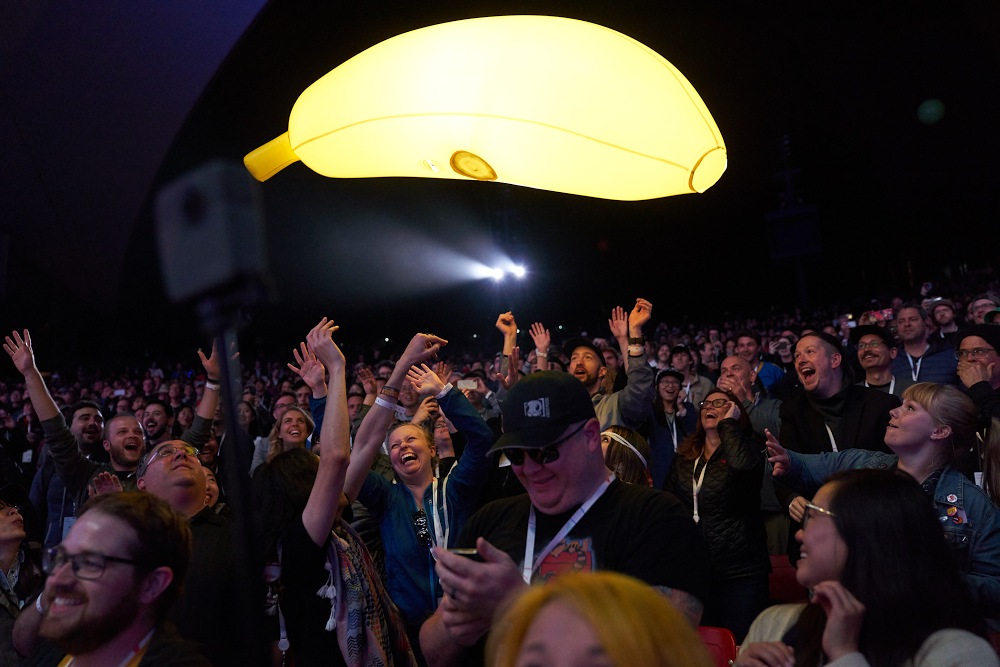Piano Genie distills 88 notes on a piano to eight buttons, which you can push to your heart’s content to make piano music. In what Jesse calls “an initial moment of inspiration,” someone put a piece of wire inside a piece of fruit, and turned fruit into the buttons for Piano Genie. “Fruit can be used as a capacitive sensor, like the screen on your phone, so you can detect whether or not someone is touching the fruit,” Jesse explains. “They were playing these fruits just by touching these different fruits, and they got excited by how that changed the interaction.”
Wayne Coyne, the singer of The Flaming Lips, noted during an I/O panel that a quick turnaround time, plus close collaboration with Google, gave them the inspiration to think outside the box. “For me, the idea that we’re not playing it on a keyboard, we’re not playing it on a guitar, we’re playing it on fruit, takes it into this other realm,” he said.
During their performance that night, Steven Drozd from The Flaming Lips, who usually plays a variety of instruments, played a “magical bowl of fruit” for the first time. He tapped each fruit in the bowl, which then played different musical tones, “singing” the fruit’s own name. With help from Magenta, the band broke into a brand-new song, “Strawberry Orange.”















